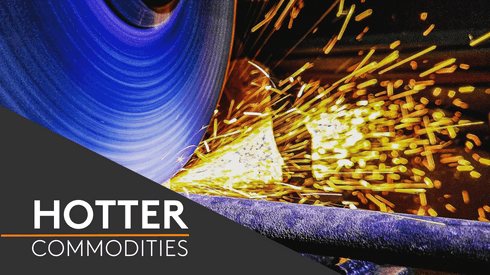Here are four key takeaways from the summit on the opportunities – and the challenges – facing this key region.
‘From global to regional economy’
Regionalization is expected to continue at pace as globalization gives way to more robust local supply chains, according to ArcelorMittal Latin America Flat Steel chief executive Jorge Luiz Ribeiro de Oliveira.
This is taking place against a complicated geopolitical background, he said, noting the war in Ukraine and economic pressure from China.
“Even though there are challenges internationally and the reality is complex, we need to stick together at this moment. We should be united in the defense of all this. Latin America has very important growth potential, and we have talents that make this task a reality,” de Oliveria said.
The point was underscored in the opening address by Ternium Argentina president Martín Berardi, when he said: “The world is becoming fragmented…we are going from a global economy to a regional one. This is an opportunity for Latin America. Our continent is becoming increasingly important.”
China’s economic woes
China remains one of the great economic engines for the region – but that engine has been spluttering as of late, economist Ricardo Amorim said. “It is not only that China is growing less, but where [it] has been growing the least is where steel is consumed – the real estate market,” he said.
An upcoming stimulus package, however, should boost that sector of the economy soon. At the end of September, People’s Bank of China (PBOC), the country’s central bank, announced a broad stimulus package for the country’s economy, focusing especially on the construction sector.
“My hunch is that the Chinese economy will start growing more,” he said. “The most significant aspect in the short term is the Chinese economy.”
Gerdau CEO Gustavo Werneck, however, brought up the complex relationship between Latin America and China and highlighted the Chinese package sounds like a stimulus that will have limited effects given the high level of industrialization of the Asian country. In this context, a slack Chinese market pushes excess material to the Latin American market due to trade measures in force in Europe and the US.
“A more active economy implies less surplus, and the Chinese have a lot of surplus,” Amorim said in response. “This could create balance in our market.”
Eyes on US election
Political instability can be both a boon and a burden for the Latin American region – especially political instability among big global players such as China and the US.
Amorim told Alacero Summit 2024 delegates that he had believed the history of politics in the Americas hit an all-time low during the chair-throwing debate among six candidates for mayor of São Paulo, Brazil, in September 2024. He has since come to believe that it was the June 2024 debate between an ailing US President Joe Biden and former President Donald Trump.
According to some voting intention polls, the former president is favored to win in the presidential election now just weeks away, Amorim said. That will likely unsettle the relationship between the US and China, he added.
“Can this become the beginning of a process of tensions in other countries? Let’s imagine the election is very complex. That will create a kind of vacuum in leadership and China will take advantage,” Amorim said.
He added that investors are pulling money out of China, and that money could flow to other promising regions like Latin America: “Trump is more likely to win. So, what’s going to happen with China and its bilateral relationship with the US. Quiet? Not so much. People are pulling money out of China. That money won’t disappear. It’ll go somewhere else.”
Amorim added that there is increased polarization in the world and confidence is waning in elections globally. That kind of extremism is challenging to businesses because they cannot easily occupy a middle ground or pivot from one set of policy to another.
“We’re going to put ourselves in the mind of a Trump supporter…a Trump supporter believes he has been gifted by God. If he doesn’t win, will this be accepted? And particularly in the case of Kamala [Harris] winning – let’s hope for the best, but we can’t rule out problems.”
Preparing for ‘post-western’ world
Latin America may have to consider a post-Western world by 2075. Andrés Malamud, a senior research fellow at the institute of social sciences of the University of Lisbon, predicts that both China and India will exceed US gross domestic product (GDP) by 2075. Latin America will have to develop better trade relationships now to sell to the new, non-Western economic leaders.
Malamud noted that Europe is in decline, citing “decadence” and economic measures designed to curb that. “China is making a contribution – if you see a telephone or an app in the US, 80-90% come from the US. Maybe some from Latin America. In China, 99% of them are from China, like two parallel worlds. Europe is nowhere to be seen.”
Auto is another example of the “parallel worlds” of West and East. In the six years between 2016 and 2022, China reversed its trade balance with the European Union in auto exports. China now sends more cars to the EU than the EU sends to China.
“We live in a post-Western world, and we haven’t noticed it,” he said. “Countries will be joining this new Silk Road, and even if they don’t, they’ll have to consider China.”
You can understand the critical forces impacting steel news and steel price movements with our reliable data-driven insights, market-reflective prices, forecasts and analysis. Navigate the complexities of the steel industry and make informed decisions with our global coverage of steel market news, steel price developments, steel market trends, forecasts and analysis. Find out more here.





